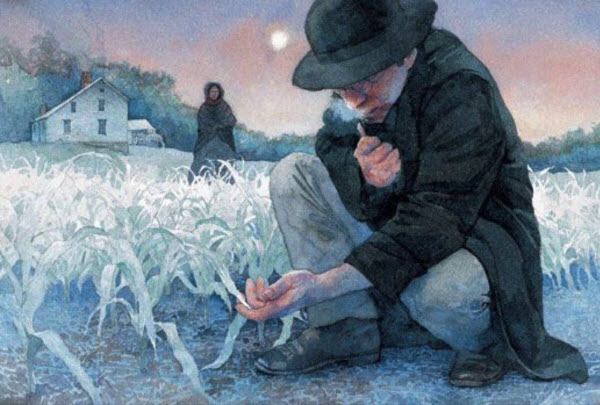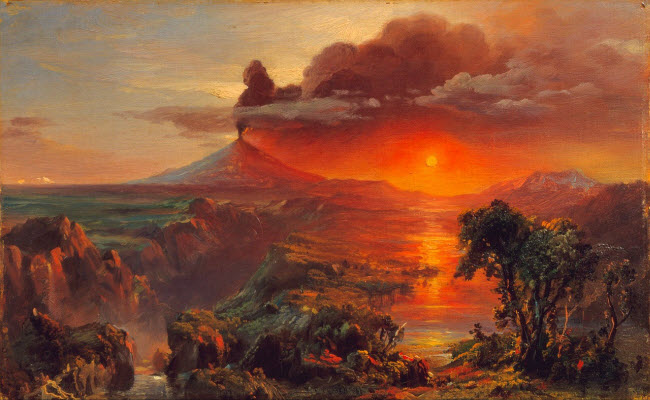There is often debate about which season is preferable: summer or winter. People from both camps present their reasons to clarify their preferences. However, there was a particular year when this debate could have been completely moot due to the absence of summer altogether and the onset of an exceptionally harsh winter that persisted for an entire year. This period, known as the “Year Without a Summer,” was marked by significant global disasters, including widespread famine and epidemics.
The story begins in the early 19th century, specifically in 1816, which later became historically known as the “Year Without a Summer.” This year fell during the tail end of the Little Ice Age, a period from 1810 to 1823 characterized by relatively low solar activity and a phenomenon known as the “Dalton Minimum.” During this time, the sun had a notably low number of sunspots, which were used by meteorologists for long-term weather predictions. Concurrently, the planet experienced the eruption of Mount Tambora, a volcano on the island of Sumbawa near Bali, Indonesia. The eruption in 1815 was described by some as the most massive volcanic explosion in recorded history. It released rivers of lava that burned pastures and forests, followed by earthquakes and tsunamis that caused approximately 90,000 deaths. The eruption also ejected vast amounts of volcanic ash into the upper atmosphere, which spread globally via atmospheric currents, enveloping the planet in a layer of dust that acted as a cosmic blanket, significantly blocking sunlight and drastically reducing its effectiveness, leading to record-breaking cold temperatures during summer.
As a result of the severe cold, agricultural production was severely disrupted in many parts of the world, directly or indirectly causing extensive crop failures, skyrocketing food prices, and the spread of famine and disease. In the United States, frost in May destroyed most crops in northern New York, the highlands of Massachusetts, New Hampshire, and Vermont. Snow fell in early June in New York, and ice was observed on lakes and rivers as far south as northwestern Pennsylvania. Reports also included frozen birds and frost in August as far south as Virginia. Due to these conditions, grain prices in the United States quadrupled at least. In Europe, famines and riots occurred in many cities, while typhus outbreaks spread in some regions. China suffered massive crop failures and catastrophic flooding, and disruptions to the Indian monsoon season led to cholera epidemics from the Ganges River to Moscow. The year also saw an increase in suicide rates due to despair from drought, bankruptcy, and food shortages.

It was a harsh summer described by contemporary witnesses as having the sun rise each morning as if through a veil of smoke, appearing red and devoid of warmth. It only provided minimal light or heat before disappearing at night, leaving a minimal impact on the Earth’s surface. In Vermont, a farmer reportedly froze to death from the cold. According to the account of his nephew, James Winchester, a great snowstorm occurred on June 17 that year. Winchester was visiting his uncle, who went to the sheep barn and joked with his wife, “If I don’t return in an hour, call the neighbors and start searching for me.” He never returned, and after three days, searchers found him frozen outside. Reverend Thomas Robbins of East Windsor, Connecticut, kept diaries detailing the harsh conditions of that year, including stories of men freezing to death, failed corn crops, and a frozen well in his town. Fish were consumed as a substitute for cattle and pigs that had frozen in their farms. Other witnesses reported picking fruit from trees and bringing it indoors to warm it before consumption. Life was harsh, as reported by the North American Review in 1816 with the headline, “What If the Sun Grew Tired of Lighting This Dreary Planet?”
Despite the negative aspects of that year, there were some positive outcomes. Due to the lack of oats for feeding horses used for transportation, German inventor Karl Drais sought new methods of transport without horses, leading to the invention of the draisine, a precursor to the modern bicycle. Additionally, the severe weather in the United States prompted thousands of families to relocate to new areas with more suitable climates and richer soils, resulting in the formation of new states like Indiana and Illinois. The harsh conditions also compelled author Mary Shelley to remain at the Villa Diodati by Lake Geneva in Switzerland, where she produced one of the most famous horror novels, “Frankenstein.”
Although the effects were temporary, as ash and aerosol particles eventually settled, allowing sunlight to reach the Earth again, scientists do not rule out the possibility of a recurrence. They note that volcanic eruptions on the scale of Tambora occur approximately once every thousand years on average. Such events have indeed recurred, albeit with less impact than that experienced in 1816. Some scientists even hope that future volcanic eruptions could help cool the Earth’s temperature to mitigate global warming, which is causing temperatures to rise above natural levels.
